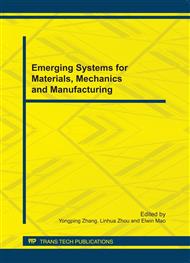p.248
p.253
p.261
p.266
p.271
p.276
p.281
p.285
p.290
Design and Implementation of High-Speed Dual-Modulus
Abstract:
This paper presents a new enhanced phase switching 15/16 dual-modulus prescaler. One more divide-by-2 stage was employed in the design compare to the conventional phase switching architecture. Since the operating speed of phase switching circuit is obviously reduced. The inverse phase switching sequence was employed in this circuit to implement glitch-free phase switching. Further more, a dynamic load master-slave DFF was employed as the first divide-by-2 stage which can increase the operating frequency of prescaler. Measurement result shows, this dual-modulus prescaler can operate at 3GHz-200MHz with 2.8mA supply current at 1.8V power supply.
Info:
Periodical:
Pages:
271-275
Citation:
Online since:
October 2011
Authors:
Price:
Сopyright:
© 2012 Trans Tech Publications Ltd. All Rights Reserved
Share:
Citation:


